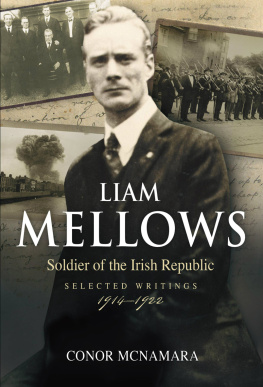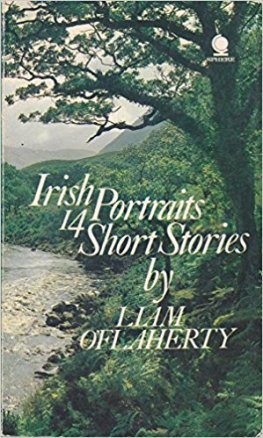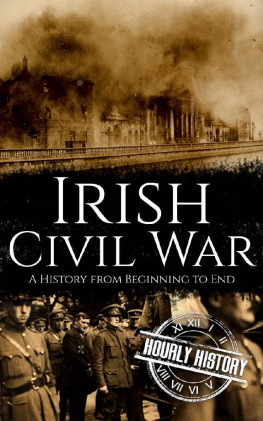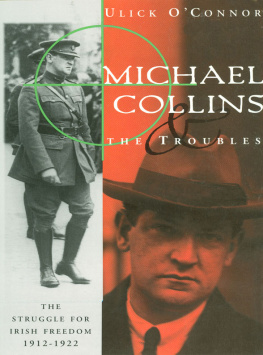
LIAM
MELLOWS
Dr Conor McNamara has written extensively about the history of the Irish revolution and rural society. He was previously a winner of the National Library of Ireland, History Fellowship (2009) and was awarded the 1916 Scholar in Residence at NUI Galway (201517). He was a Moore Institute, NUI Galway, Visiting Fellow (2017) and this is his fifth publication.
LIAM
MELLOWS
Soldier of the Irish Republic
SELECTED WRITINGS
19141922
Conor McNamara

First published in 2019 by
Irish Academic Press
10 Georges Street
Newbridge
Co. Kildare
Ireland
www.iap.ie
Conor McNamara, 2019
9781788550789 (Paper)
9781788550796 (Kindle)
9781788550802 (Epub)
9781788550819 (PDF)
British Library Cataloguing in Publication Data
An entry can be found on request
Library of Congress Cataloging in Publication Data
An entry can be found on request
All rights reserved. Without limiting the rights under copyright reserved alone, no part of this publication may be reproduced, stored in or introduced into a retrieval system, or transmitted, in any form or by any means (electronic, mechanical, photocopying, recording or otherwise) without the prior written permission of both the copyright owner and the above publisher of this book.
Typeset in Adobe Caslon Pro 11/14 pt
Cover front: Liam Mellows portrait taken in the United States, circa 1919 (National Library of Ireland, NPA LME); Irish Republican leaders, NYC (1919): Harry Boland, Liam Mellows, amon de Valera, Patrick McCartan and Diarmuid Lynch standing, John Devoy seated (National Library of Ireland, NPA RPH6); Howth Gun Running, 1914 (National Library of Ireland); Four Courts bombardment (National Library of Ireland).
Cover back: Irish Volunteers, US postcard (National Library of Ireland).
Contents
Index of Writings
Acknowledgements
I am very grateful for the professional support of the staff at a number of libraries and institutions in Ireland and the United States: the Dublin City Library, Irish Studies Section, at Pearse Street; Tamiment Library, New York University; the New York Public Library; the National Library of Ireland; and University College Dublin Archives. The digitised archives at the Bureau of Military History, Cathal Brugha Barracks, Dublin, and Villanova University have been invaluable.
At Irish Academic Press, Conor Graham and Fiona Dunne are exceptionally supportive and a pleasure to work with. I am indebted to friends and fellow historians, Brian Hanley, John Cunningham, Tony Varley and Martin ODonoghue for sharing their knowledge of Irish republicanism. My thanks to Luke Callinan for his help with translation. For his unstinting support, I will always be very grateful to my friend, Lorcan Collins. I am very thankful to Seona MacReamoinn, Alessandra Nania and everyone at the University of Minnesota, Dublin Programme, for their friendship and support. Marie Mannion, heritage officer at Galway County Council, continues to show what local authorities can achieve in regard to public history. Mary Harris and Dan Carey at NUI Galway have been most supportive over the last number of years. To my parents and to the extended Meagher family, New York, I am most thankful. I am grateful to my wife, Meredith, for putting up with all of this.
Conor McNamara
Athenry, Co. Galway
April 2019
CHAPTER 1
Behold the Mysteries of Faith : Liam Mellows, A Life in Search of the Heroic
O n a wet afternoon in October 1924, the body of Liam Mellows reposed alongside ten of his republican comrades in the Carmelite Church, Whitefriar Street, in Dublins south-inner city.
Following Mass, the hearses formed up in front of the church while throngs of onlookers crammed the surrounding streets; similar scenes were being enacted in towns and villages across Ireland. A republican guard of honour flanked the coffins, followed by small groups of relatives, clergy and sympathisers. At 2.45 p.m. the motorcade began its silent procession through the rain-drenched streets and north to Glasnevin Cemetery, the scale of the crowds forcing the authorities to close the city to traffic. The hearse carrying Mellows remains broke off early from the procession and made its way through the south of the city and on towards the Wexford countryside. Countess Markievicz would later deliver the graveside eulogy while the National Army surrounded the mourners to prevent a final salute by the Irish Republican Army to their fallen commander.
Liam Mellows was a central figure in the republican movement in both Ireland and the United States from his first involvement with the Fianna ireann republican boy scouts in 1911, until his execution at the height of the Civil War in December 1922. A full-time organiser for the Fianna, a movement that was to provide a coterie of officers for the republican movement, he championed the concept of national salvation through an insurrection of the young. A member of the first executive of the Irish Volunteers in November 1913, he was appointed a national organiser and was at the forefront of the organisations preparations for the 1916 Rebellion. Dispatched to Galway in October 1914, he was to lead over 500 Volunteers in the doomed Galway Rising, where he commanded an army bereft of desperately needed rifles from the ill-fated German steamship, the Aud . It was the first bitter disappointment among a litany of personal disasters that was to follow.
In the aftermath of the rebellion, Mellows spent four years as a representative of the Irish Volunteers in New York where he was tasked with helping secure money, arms and political support for revolution in Ireland. Styled Commandant Mellows, his time in the United States was unhappy and he suffered emotionally, confined to his bed and malnourished at one point; jailed in the infamous Tombs Prison while his comrades in Clan na Gael dithered over his bail; vilified and shunned by the American Fenians, and worst of all, labelled an informer in 1917 by no less than the Mayor of New York, John P. Mitchel, grandson of the famed nineteenth-century revolutionary and Young Ireland leader, John Mitchel.
Upon his return to Ireland in November 1920, Mellows became a member of the GHQ of the Irish Volunteers and was responsible for the procurement of arms during the War of Independence. The role entailed dangerous liaisons with European arms dealers and supporters in Britain. Distrustful of Michael Collins, who he felt was undermining him, the position demanded absolute secrecy and his activities during this period remain shrouded in mystery. Bitterly opposed to the Anglo-Irish Treaty that ended the War of Independence, Mellows was one of the most influential opponents of the agreement. His role in occupying the Four Courts with the anti-Treaty IRA leadership in April 1922 was central to the events that led to the outbreak of the Civil War. Captured in the bombardment of the building in June, his execution in December, alongside Richard Barrett, Joseph McKelvey and Rory OConnor in Mountjoy Jail, in retaliation for an attack on two pro-Treaty members of Parliament in which TD Sean Hales was killed, was among the most divisive acts of the new state. During the
Elected a member of Parliament for two constituencies in the 1918 general election, and again for Galway in the uncontested election of May 1921, Mellows never pretended to be a politician; he loathed politics and, above all else, espoused physical force as the engine of the Irish revolution. Like his idol, Patrick Pearse, Mellows was unmarried, puritanical in habits and ruminated profoundly over his own actions, putting the cause of the republic before all else. While he was a senior figure among the revolutionary elite, he remained an outsider within the coterie of leading militants. A gifted but reluctant public speaker, he published his writings anonymously, heaping credit upon his subordinates while privately suffering profound self-doubt.
Next page








